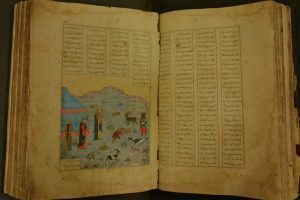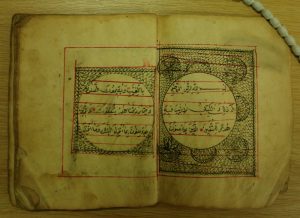
The Collections of the Royal Asiatic Society hold 51 Ottoman manuscripts.
All these manuscripts are in a codex form and in Turkish Language. There is only one example containing illuminations. This is Turkish 47: a copy of Külliyat-ı Ali Şir Nevai, created in 16th century, probably in Turkey. In the manuscript, there are 19 chapters written by Ali Şir Nevai (1441-1501), and there are 5 illuminated pages.

The manuscripts are written in different scripts including Nastaliq, Taliq, Naskh and Diwani. Most of the books contain an official history of the Ottoman Empire. These history books were written by some of the most important historians of the Ottoman Empire, for example Nishanci Mehmed Pasha, Vakanus Rashid Pasha and Izzi Pasha.
In addition, there are examples of books on Islam and Islamic rules, mainly written by Shaykh al-Islams who were an authority on religious works in the Ottoman Empire. Authors include Catalcali Ali Efendi and Saaddedin Hoca. These include Turkish 64: a small size Quran Qerim, created probably in Turkey, but of unknown date and creator. This book contains two different Surah from the holy book of Islam, Quran-i Kerim.

Some of the manuscripts are of poetry including those of Evliya Celebi, Naima, Ali Sir Nevai, and Taslicali Yahya. These include Turkish 49: a copy of Mizanü’l-hatt, created in 1765, probably in Turkey. This is a work in Turkish verse on the art of Arabic calligraphy. After a few pages of poetic descriptions, there is a different script style of each letter of the Arabic alphabet. This manuscript was copied from the work of Hafiz Osman El Halim Efendi, a famous calligraphist in the Ottoman Empire between 1642-1698.

Generally, the condition of the collection is good and we would recommend researchers with interests in the Ottoman Empire’s history, society, religion, relations and literature to come and use these manuscripts.
